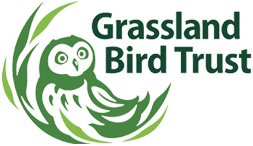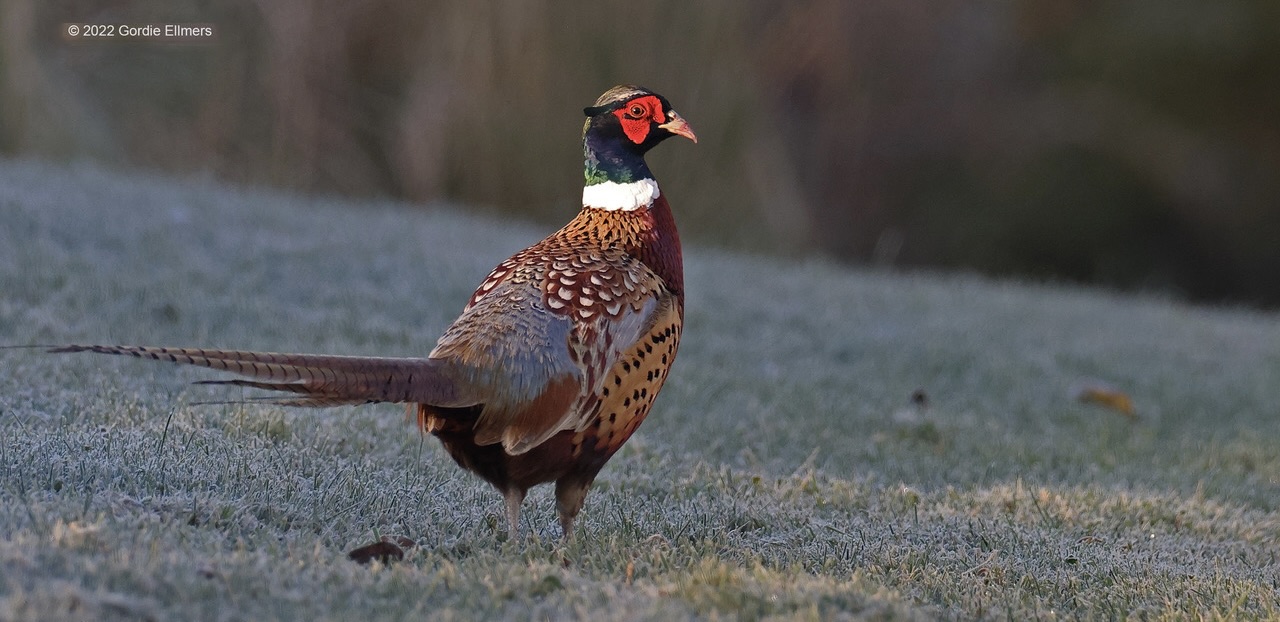
Listen! There is something in the rustling leaves.
As our colorful, boisterous, fair-weather friends head south, others breeze in. And this season means fewer distractions and less camouflaging foliage!
For me, photo ops are a big autumn bonus. The season’s burnished reds, oranges, and golds with autumn’s amber-tinged light make stunning backdrops for avian photography. And sparse foliage can mean an excellent lens view of our more reserved cold-weather residents.
Our state is fortunate to be situated on the Atlantic flyway –
– a giant, ancient highway of avian migration. Twice yearly, everything from warblers to raptors wing their way north in the spring and south again in the fall. And our grasslands and wetlands provide a “pit-stop” of berries, bugs, and (little) beasts.
Changing seasons and restless birds always remind me of the long-ago road trips with our parents as kids. After driving for hours, we would burst out of the car and into a Stucky’s truck stop, exploring the aisles and clamoring for snacks. Well, for migrating birds, Fort Edward is just that, a welcoming, wonderful Stucky’s – minus the pecan rolls, but heavy on the seeds.
Some birds are just passing through, and others will stay the winter, joining our all-year residents and spreading a little brightness across our (soon-to-be) winter-cast skies.
So, grab your binoculars and camera. Let’s see who is rustling those leaves!
Look Fast – These Birds are Just Passing Through
The Rusty Blackbird
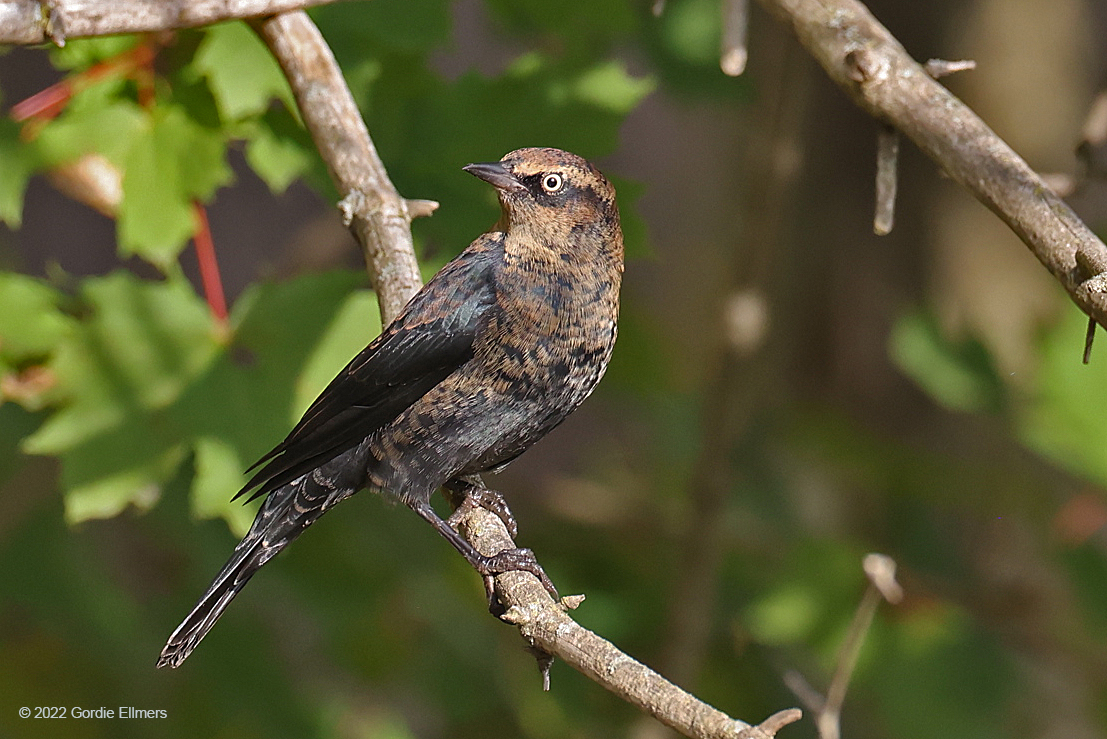
Rusty Blackbird Euphagus carolinus
Rusty blackbirds arrive from the far north’s boreal forests (their summer breeding grounds) just when (to my mind) the males’ coloring becomes more interesting, turning from deep black to … well … rusty! But look fast! These birds are just passing through on their way to the southern states and Mexico.
Conservation Status:
(IUNC: Vulnerable, in Steep Decline)
The Rusty blackbird’s population has declined by 3% yearly since 1966. That equals 75% fewer rusty blackbirds in the world – and shrinking. Why? They need wet woodland to breed but are losing critical habitat to clearcutting, draining, and expanding agriculture. And then there are the beavers.
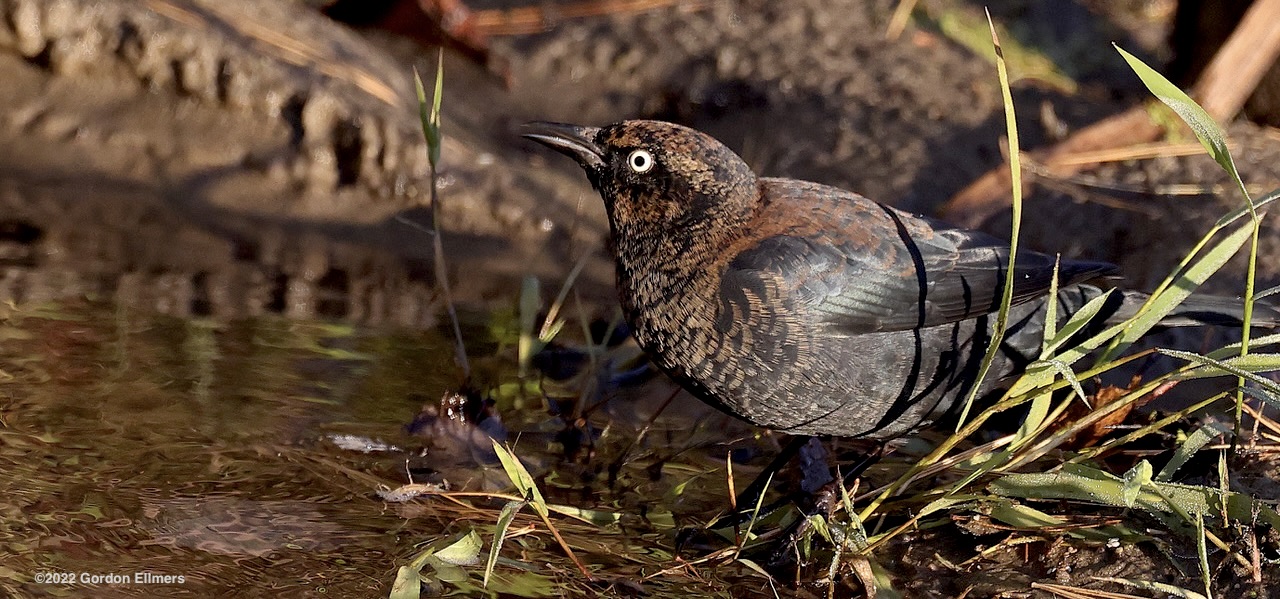
Rusty Blackbird Fun Fact:
Beavers Impact Rusty blackbird populations!
Connected! Beavers and Rusty Blackbirds. So, you ask, what do beavers have to do with rusty blackbirds? Beavers, a keystone species, create vital habitat for many species – including rusty blackbirds. Unfortunately, beaver populations have declined by 80% due to (continued) hunting and habitat loss. With the decline of beavers, so go the rusty blackbirds.
Where to look for Rusty Blackbirds:
Look for them in wet places around the water’s edge – but look fast! This songbird wastes no time on its way south. Rusty blackbird will soon be on its way.
The Dark-Eyed Junco
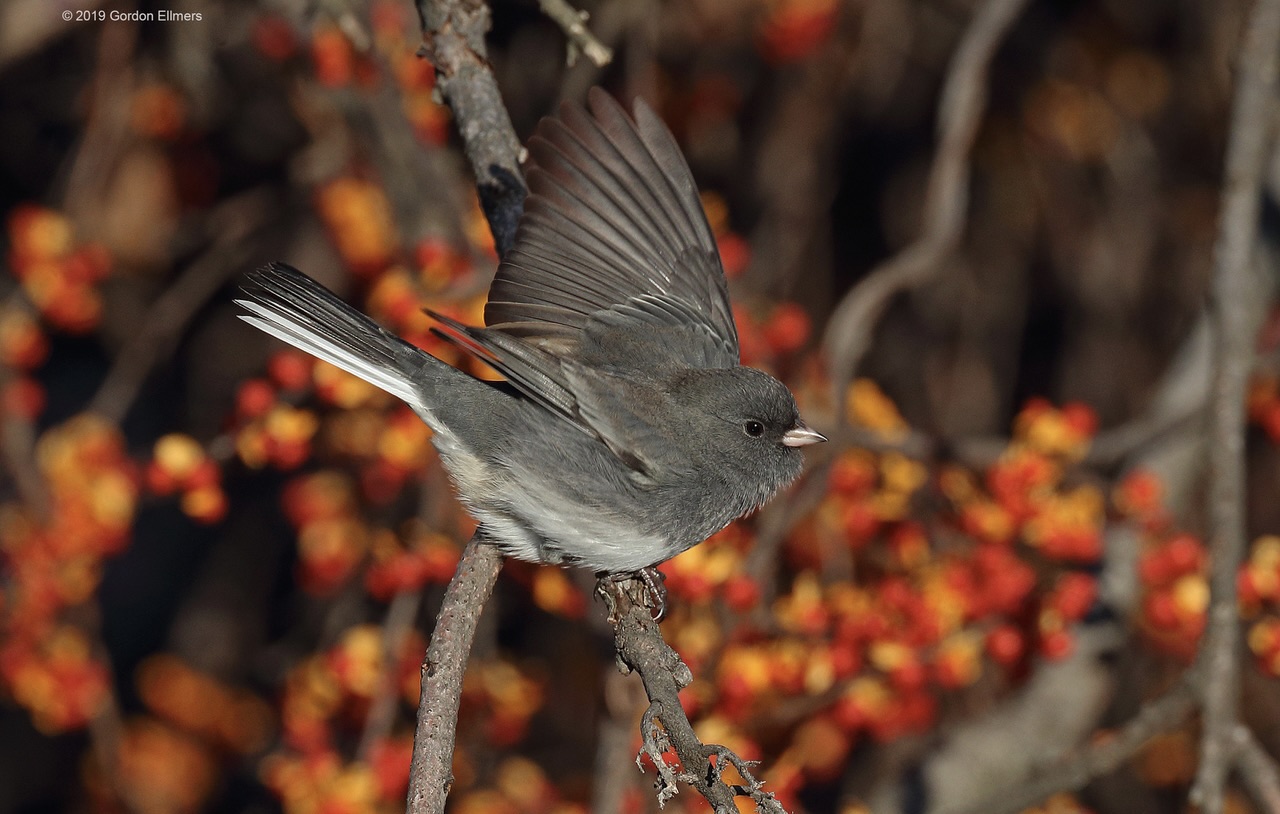
Slate Colored (Dark-eyed) Junco Junco hyemalis
Dark eyed Junco Junco hyemalis
Dark-eyed juncos range across all of North America, but their colors and patterns vary significantly from region to region. In our area, they dress-for-success in (mostly) grey and white. But all Dark-eyed juncos have those black, eager (mischievous!) eyes.
These perky little birds (from the sparrow family) are headed south from their far-north breeding grounds although a few Dark-eyed juncos might have kept cool in our wooded areas and higher elevations during the warmer month. But they will be traveling soon.
Conservation Status:
IUCN: Least Concern, but declining. American Bird Conservancy estimates a 40% decrease over the last few decades.
Dark-Eyed junco Fun Fact:
John J. Audubon dubbed Dark-eyed juncos “snowbirds” because they seemed to appear with the snow.
Where to Look for Dark-eyed Juncos:
Dark-eyed juncos congregate in small flocks near the ground, in bushes and shrubbery. These are not quiet birds. You’ll probably hear them first, and then when you are close enough to realize there is a flock at eye-level in that bush … whoosh – off they go together.
Dark-eyed juncos have some beautiful – and very photogenic relatives including
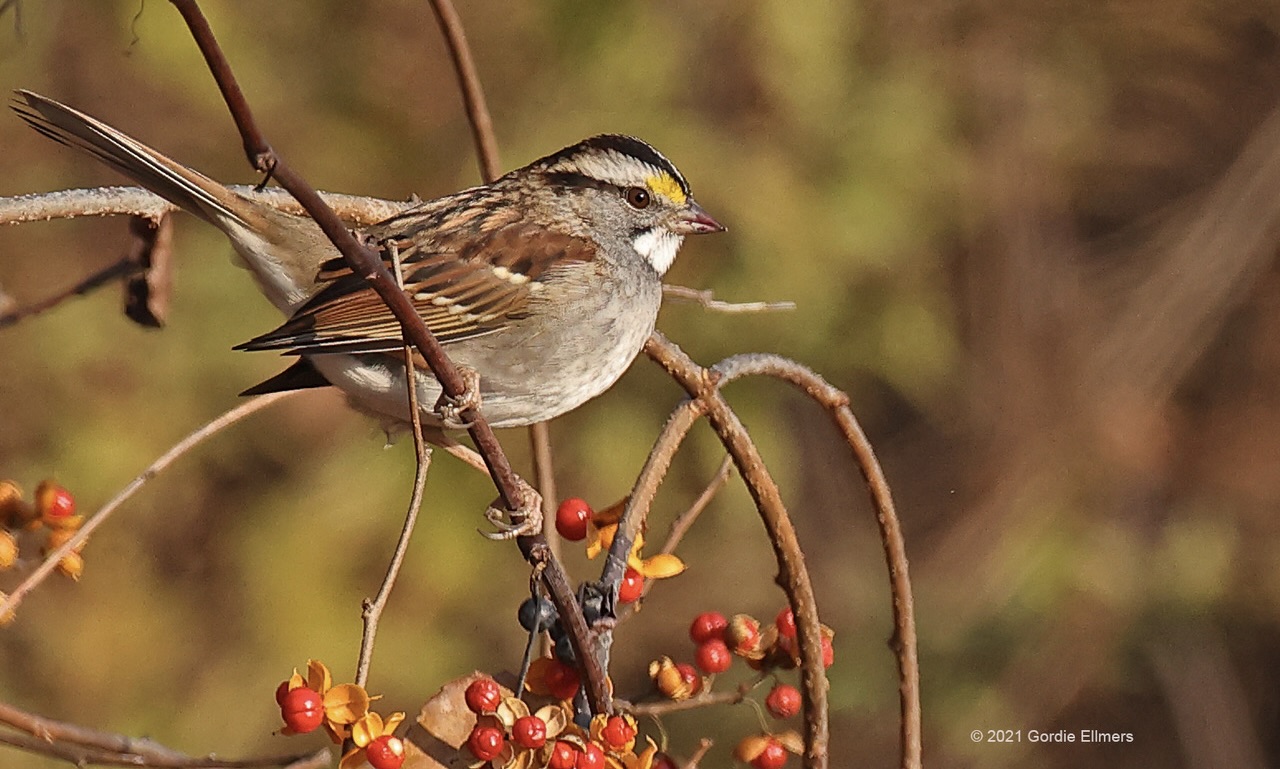
Look Out for Incoming Raptors!
Most are passing through, but some may stay for a while. Better look for them now
The Merlin
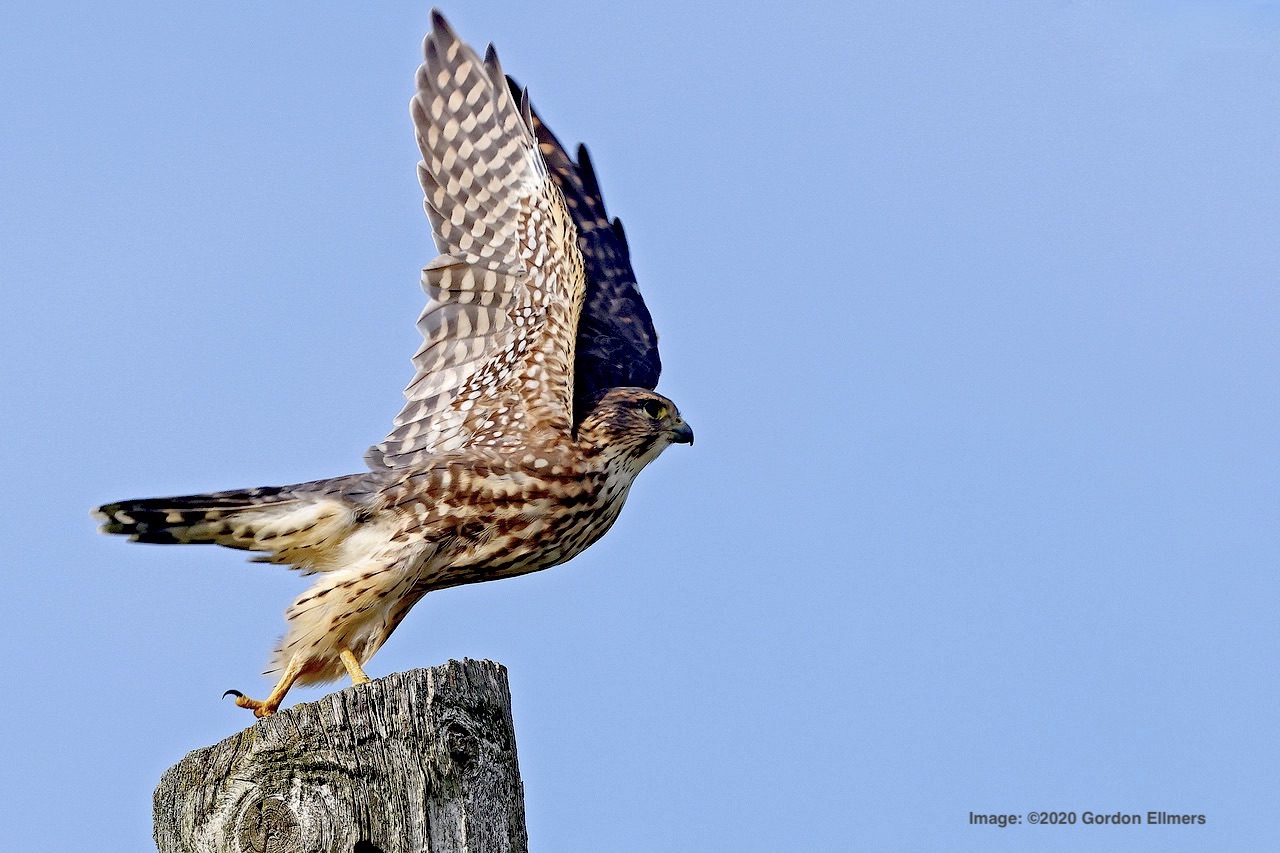
The Merlin, Falco columbarius
This small but fierce falcon is passing through from its summer grounds in the far north of Canada and Alaska. They probably won’t stay long.
The Merlin doesn’t swoop down on prey. Instead, it hunts smaller birds and even insects from a horizontal position or below, chasing the target upward until it tires and can be caught. And, if you see a flock of birds suddenly burst into flight, watch closely – they may be trying to escape from a Merlin
Conservation Status
IUNC: Least Concern. Its adaptability to town and city life has helped stabilize its population.
Merlin Fun Fact
The Merlin is an opportunistic nester. They don’t build their own; instead, they use – or take over – the old nests of other raptors, crows, and magpies.
Where to Look for Merlin
Begin your search in our Grassland Bird Trust Alfred Z Solomon Viewing Area in Fort Edward on CR 42 .
The Cooper’s Hawk
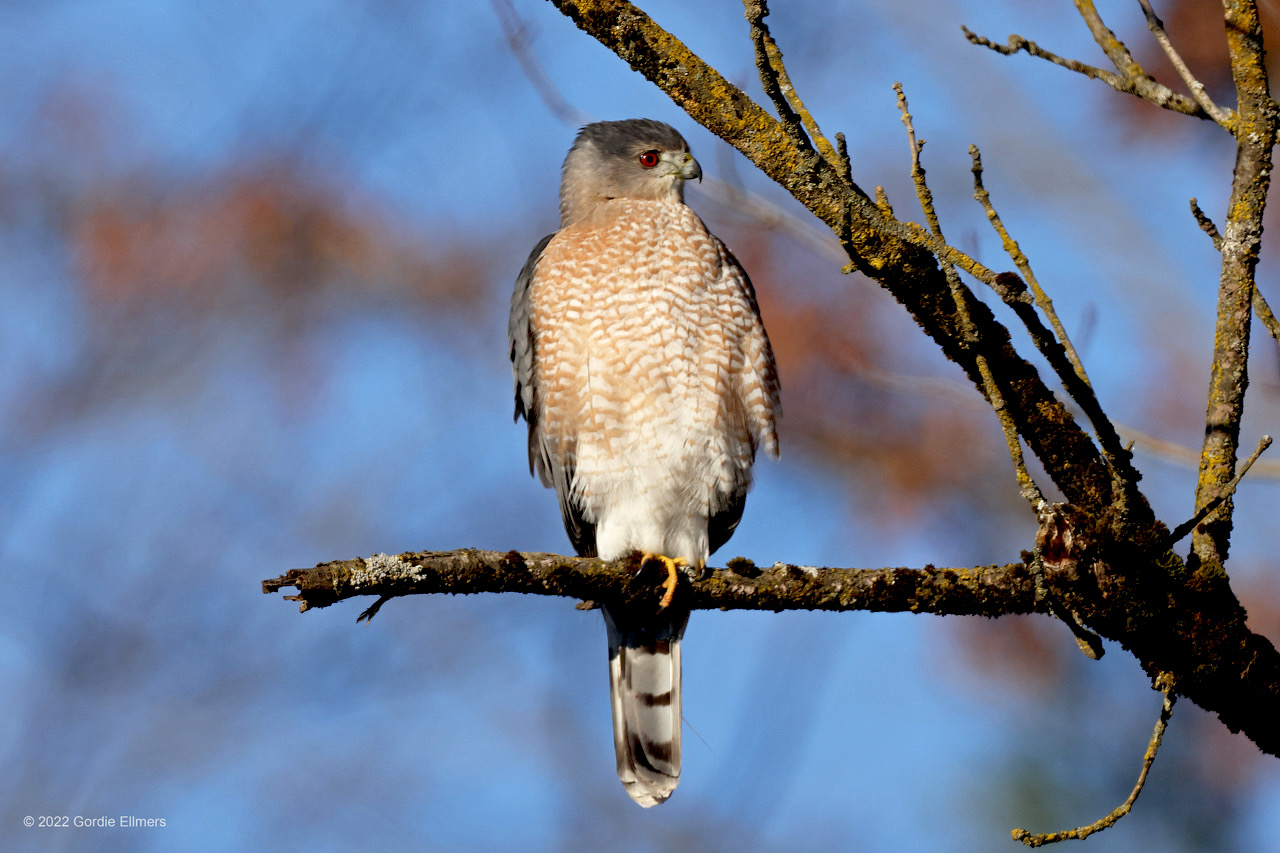
Cooper’s Hawk Accipiter cooperii
Cooper’s hawks are short-distance migrators. They summer near our northern border and Canada; and while some are going further south, others may winter in our grassland. Many non-breeding Cooper’s hawks will head to Mexico for the cold months.
Conservation Status
Least Concern
Cooper’s Hawk Fun Fact
Cooper’s hawks are famously skillful flyers, but even the best athletes get hurt. Analysis of Cooper’s hawk skeletons often reveals fractures in their chest bones.
Where to Look for Cooper’s Hawk
The edges of fields near the tree line. The Alfred Z. Solomon Viewing Area (Fort Edward) is a great start for Cooper’s hawks as well as Merlin and Northern Harrier hawks.
Some Autumn Birds Have Been Here All Along!
Our grasslands and surrounding areas are the year-round home for many avian species, however, some are more elusive during the sultry months, coming into their own as the temperature drops. These are a few of my favorites:
The Ring-necked Pheasant
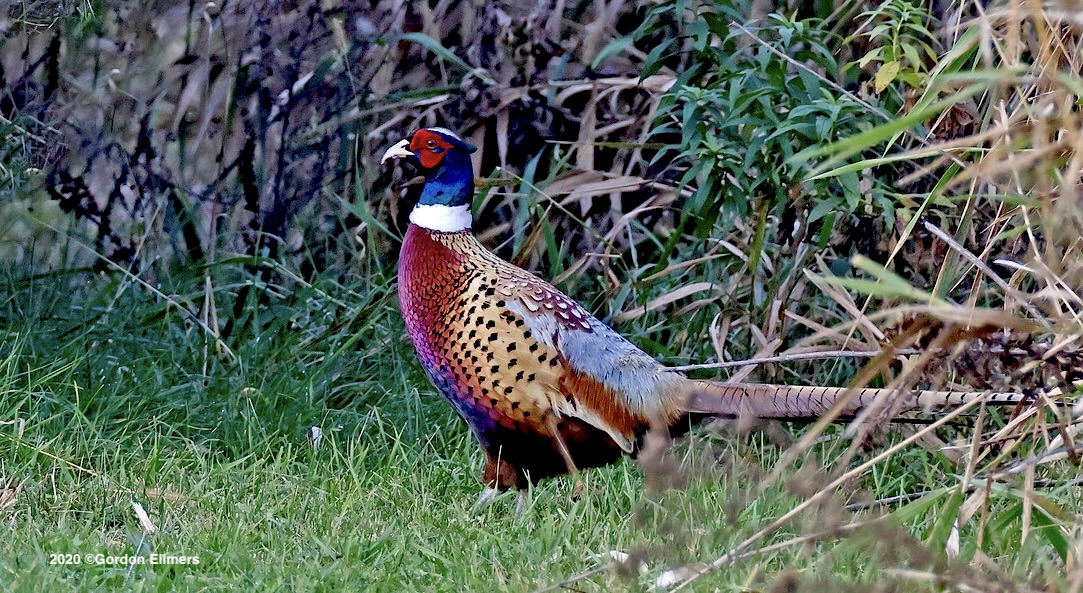
Ring-necked Pheasant Phasianus colchicus
Ring-necked pheasants are year-round breeding residents, but to me, the male’s iridescent coppery and gold plumage, long elegant tail feathers, and bright red face are the epitome of autumn. Females blend almost invisibly into the landscape, so I always feel like I earned a gold star when I spot one.
Conservation Status.
IUCN: Least Concern, but decreasing
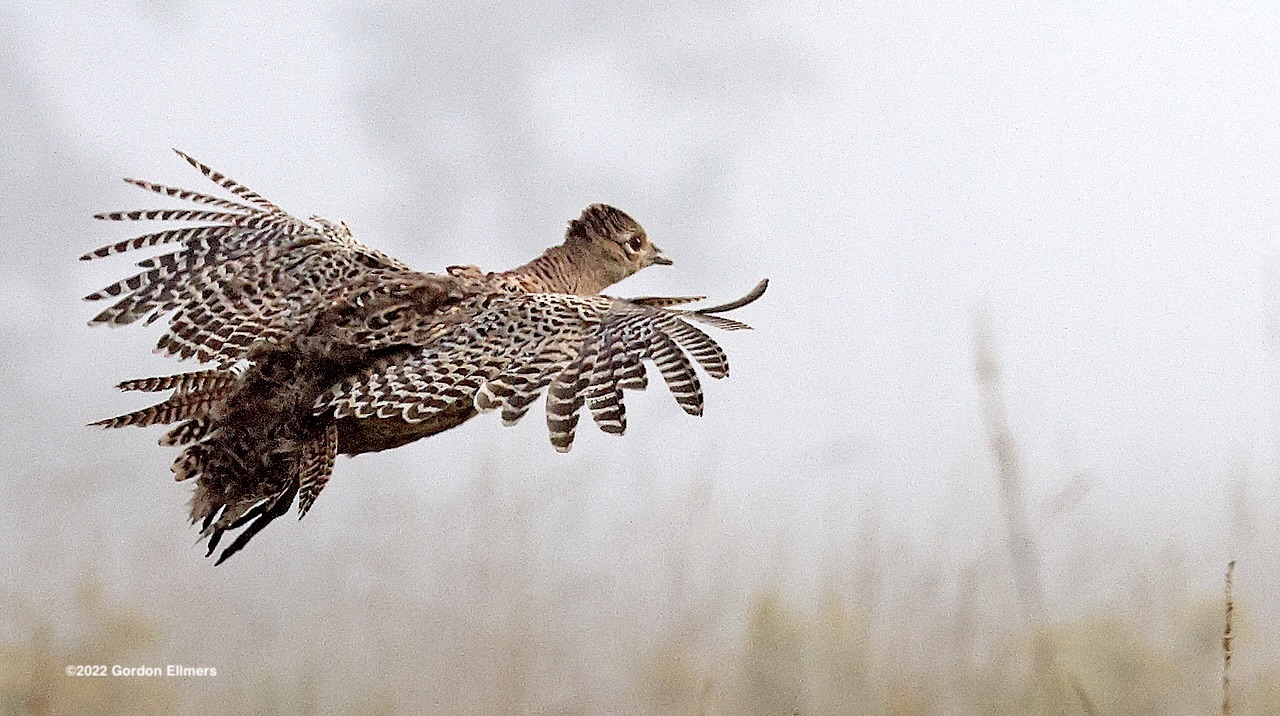
Ring-necked Pheasant Fun Fact:
Ring-necked pheasants are not a native species! They were first introduced from China in 1881, by Oregon native Owen Nickerson Denny, a tax collector turned diplomat in China and Korea.
Where to Find Ring-necked Pheasants:
Look down; these birds would rather walk or run than fly – although they like to find a high point to roost night. Ring-necked pheasants are ground foragers searching for seeds, insects, and fallen grain. You’ll find them in grassland and farm fields.
Cedar Waxwing
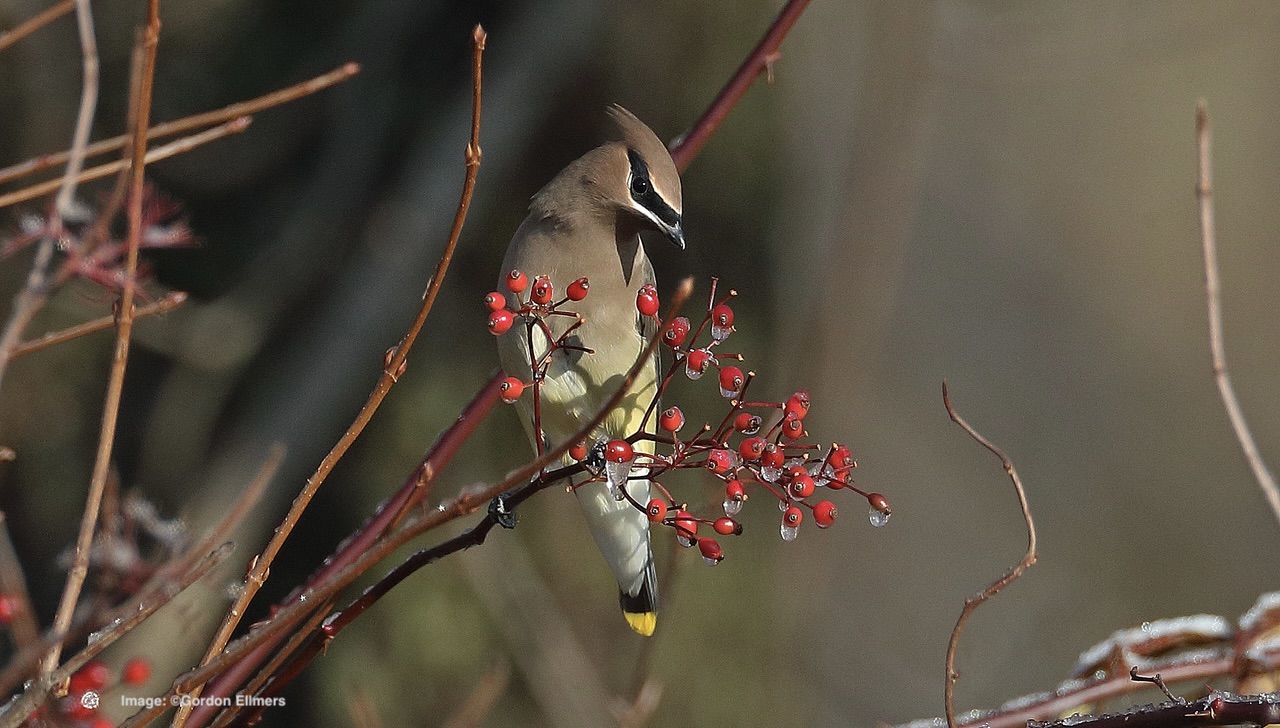
Some cedar waxwings may stay the winter – and others may head south, but they are here right now, and these gorgeous birds are some of my favorite to watch and photograph in the autumn. They are insect eaters in the summer, but when berries appear, they do not miss a munching minute!
Conservation Status
Least Concern and may even be increasing thanks to plentiful berry and fruit trees planted in gardens! But see below for notes on plantings.
Cedar Waxwing Fun Facts:
Cedar waxwings have bright yellow tail tips – except for some that have orange. Why? Introduced (invasive) honeysuckle turns them orange if they eat the berries during the feather growth period.
Not a Fun Fact:
Another invasive Nandina, (also called sacred bamboo, although it is not in the bamboo family) introduced from China and Japan, will kill them. Make sure you plant your garden with only native species.
Where to look for Cedar Waxwings:
Our feeder canals are a great place to look, especially in berry bushes and fruiting trees.
This Bird Changes Significantly in Winter
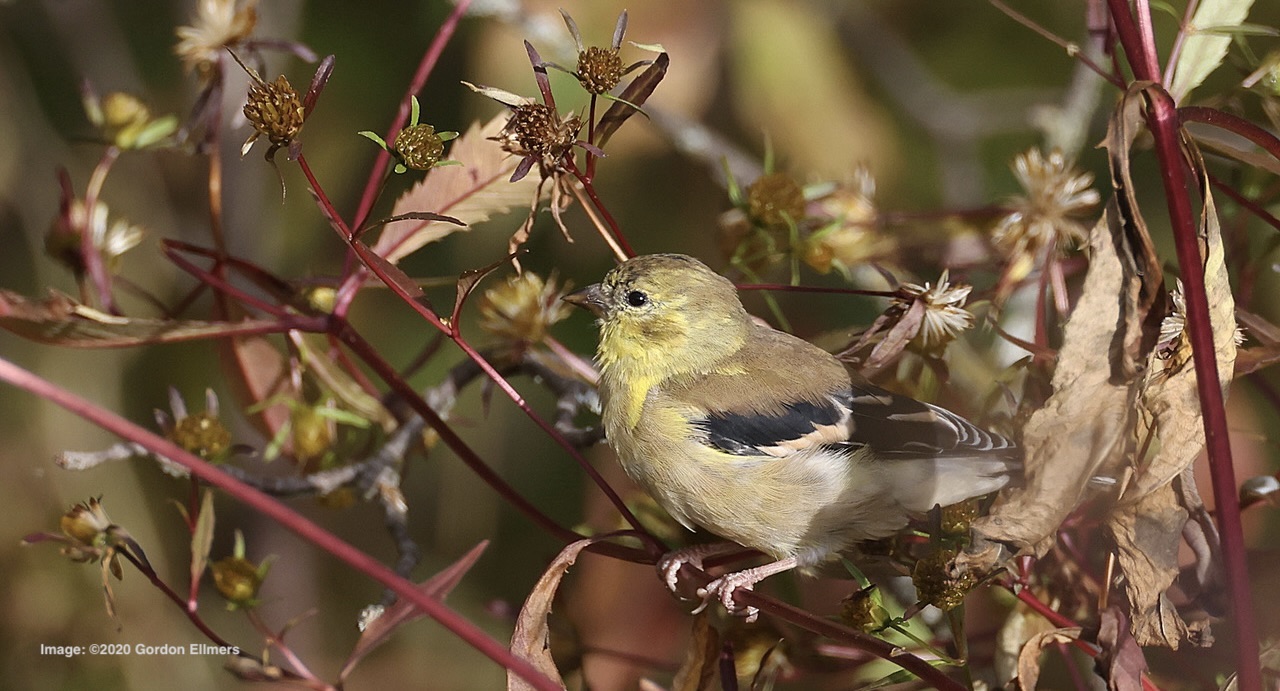
The coloring of some year-round birds becomes so different you might mistake them for newly arrived migrants!
American Goldfinch. Spinus tristis
In summer, the sun-colored American goldfinch male is easy to spot in trees and bushes or bounce-flying across the road. However, as temperatures drip, so does his shine. That bright yellow fades into subtle light brown, olive, and dull, soft yellow, similar to the female’s coloring; so although they stay here, American goldfinches are much more challenging to spot. But happily, they never lose their bounce!
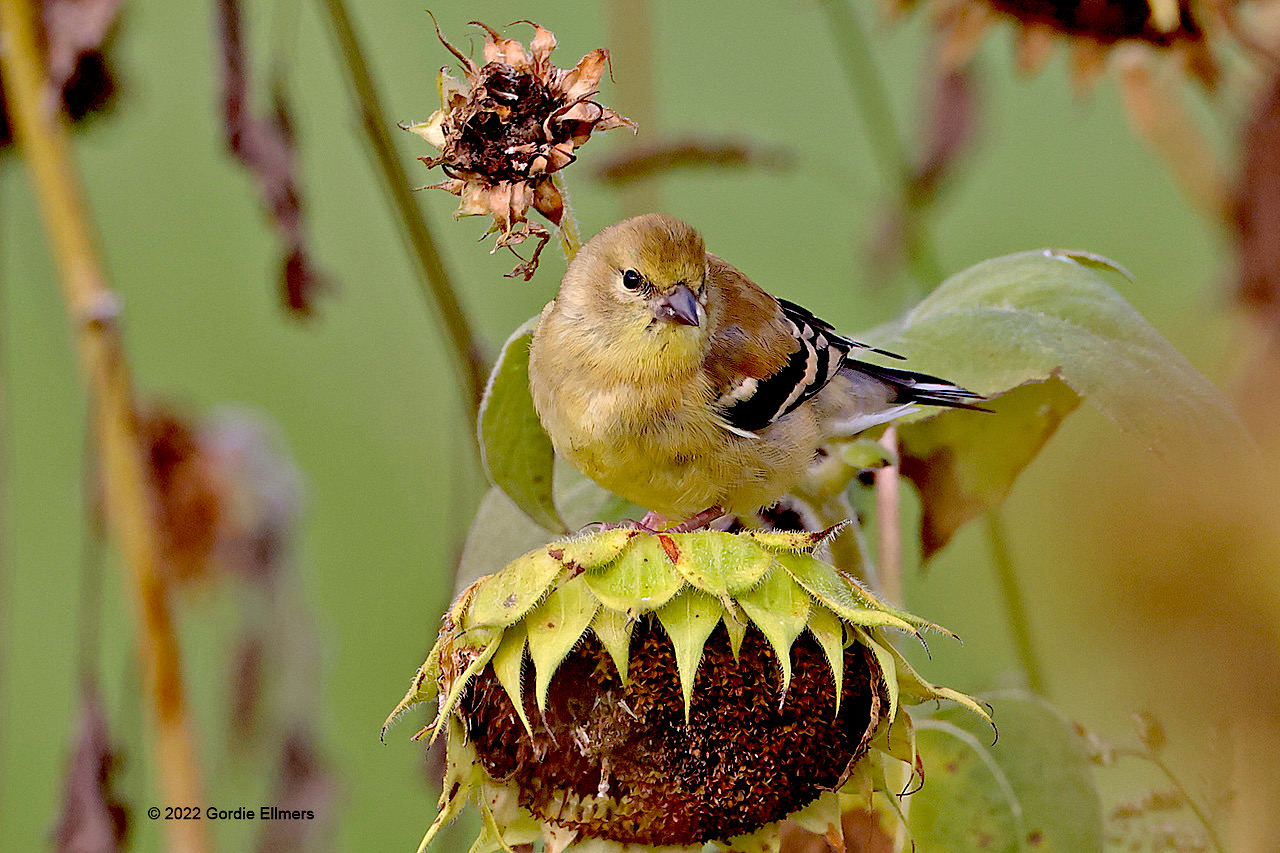
Conservation Status: IUCN, Least Concern, and (relatively) stable; however, the Cornell Lab of Ornithology notes a 25% decline between 1966 and 2019.
American Goldfinch Fun Fact:
American Goldfinches are vegans! They eat no fruit or insects, only seeds.
Where to look for American Goldfinch:
Unless the temperature drops below zero, the birds stay year-round. Look on or near dried sunflowers, thistles, dried asters, milkweed (another reason to plant this Monarch butterfly favorite) and in and near seeding grasses and weeds for great photo ops!
Happy Autumn Birding!
These are just a few of the many species that will spend the season with us in and around our grasslands. How many have you found? More will arrive a bit later in the season (hint: owls!) Stay tuned!
Happy birding, and don’t forget to share what you’ve seen!
Contributor, Roberta Kravette, is the editor of Destination: Wildlife dedicated to responsible wildlife tourism as a means to educate, inspire, and yes, save the planet. She is an ardent lover of, and frequent writer for, Grassland Bird Trust and all it is doing to help preserve grasslands, birds and the Earth.
